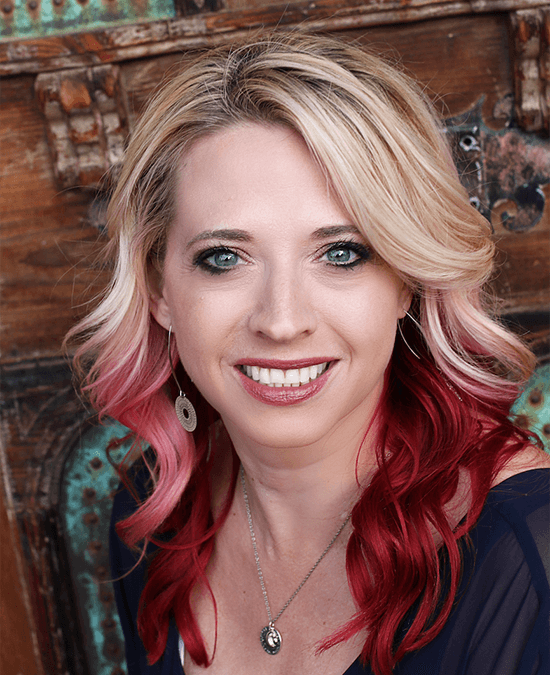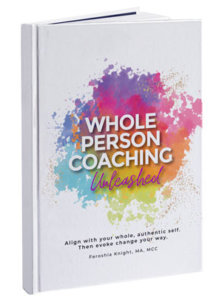Ever wondered what it would be like to leverage coaching into your day job? What about a method that could increase your impact, effectiveness and personal success by helping others do the same?
Witness the benefits of internal coaching and discover ways to measure its ROI within an organizational setting by sitting alongside Feroshia Knight (Master Coach and founder of Coach Training World) as she talks with Dr. Gina Conner. Gina is an influencer inside a large state university who is making her impact by developing teachers to be at their best, personally as well as professionally. [Video Below]
Gina’s unique coaching style blends a whole person approach layered with instructional coaching. She melds Whole Person Coaching seamlessly with her expertise to help new teachers develop the skills they need to be highly effective in the classroom.
“It’s pretty typical in working with new teachers that we often feel like we need to tell them what their goals are or tell them how they need to improve,” Gina says. “This past year, I’ve really taken a different approach working with teachers, building on the instructional coaching model but also bringing in a whole person perspective.”
Doing so has allowed Gina to dig deeper into the beliefs and values of each individual teacher, exploring how these aspects of an individual inform them in their teaching practice. This technique also allows her to help them with issues she’s never delved into before like life-balance and leadership, as well as systemic issues within schools and organizations.
Her success has been noticed by the teachers she supports.
“What I’ve seen is an impact on my evaluations as their instructor,” Gina says. “Looking at the difference before I used [coaching], I had very few robust comments. It was like ‘oh, she’s great’ – things like that. But once I started using this approach, I could not believe the number of comments and positive feedback that I got from teachers about how it’s helped them and how my work with them has made a difference in their practice as a teacher. That was so affirming to me when I saw the huge difference between those. They feel it – they feel the difference! So even though some of them don’t even know the difference because it was with other students, I see the difference and the feedback that I’m getting from students.”
The research Gina has started to conduct and the results she’s been able to achieve are notable at a time when some organizations are moving into what’s called a “coach-like” culture. Under this definition, coaching within an organization can be interpreted in different ways.
Yet Gina has discovered the results an internal coach can produce by bringing in a Whole Person mentality. Specifically, she focuses on how people interact with each other and function within the broader scope of their lives, striving to bring out the best in others by first being their best selves.
“In working with teachers, they have issues beyond just the classroom,” Gina says. “So for instance, I have a teacher this year who has kids; she had to have surgery; she has a lot of things going on in her life. Plus, she works in a very demanding special education placement in her school, working with kids with autism. One of the challenges she was experiencing is … balancing and juggling all these pieces of her life.
She’s an excellent teacher, but teacher burnout is a very real thing. Teachers burn out, and they’re some of the hardest-working people out there. It can be hard to be a teacher, but especially when you have these additional challenges.”
Approaching this case with a foundational understanding of effective coaching instruction, in combination with adult learning and systems thinking, Gina has coached this teacher, and many more like her, beyond the instructional supports. Together they’ve generated solutions on how to move toward goals so teachers don’t feel continually stressed and drained by their life and work.
“One of the real benefits of [coaching] that has been surprising to me [is its ability to span] out beyond just the instructional lens to look at someone as a whole person and the challenges of their real life,” Gina says. “[These aspects] impact who they are in the classroom and their effectiveness in the classroom as well.
We have to listen to the beliefs, the needs, the roles, the values of the people that we’re working with in order to be effective with them on a larger scale. No matter what their profession, what their goals are, you have to have that as your central focus: who they are as an individual, and what their needs are, and who they are as a person.”
Join Gina and Feroshia as they discuss the interrelated nature of the whole person, the organizational system itself, and the ways in which both are impacted by how people learn and understand.
Key segments in the discussion include:
- 04:50 – The specific mindset that can ignite change within a large organizational setting
- 11:26 – Gina’s checklist of qualities that enable you to tap into the resourcefulness of the individual (in any setting)
- 13:15 – The value of coaching intrapreneurship

Subscribe to our YouTube channel for more insights into the world of holistic coaching and the business of change. Join in the dialog with leading coaches who are using their vast array of individual skills and knowledge as they work within a diverse range of specialized industries
To learn what separates Whole Person Coaching from other forms of the practice, you can visit us at: https://coachtrainingworld.com






